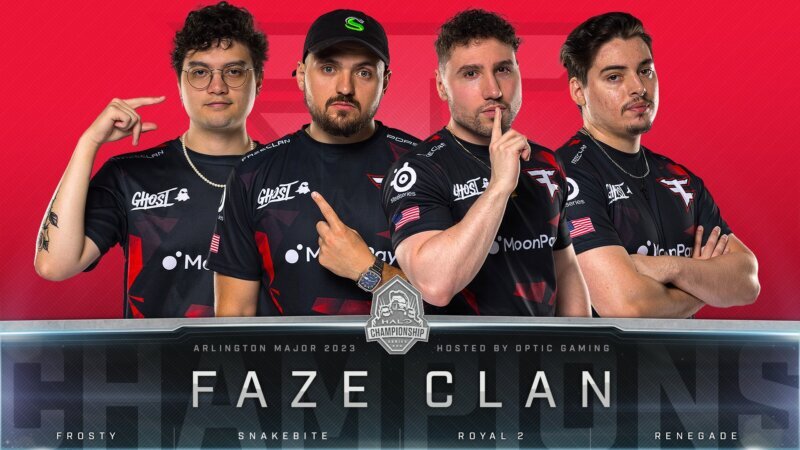Last night, FaZe Clan lifted the trophy on the stage of the Arlington Major in Texas, claiming a $100,000 prize. It was a hard-fought weekend for FaZe, with the team first topping the table in the Pool Play stage and then battering all comers during the Championship Bracket. For a while, it seemed like Spacestation was going to snatch the prize away – or that Quadrant would make a surprise grab for the trophy – but it wasn’t to be.
However, despite a relatively entertaining Major, Halo’s esports profile continues to depreciate. Following 2022’s struggles that saw several teams leave the Halo Championship Series, things haven’t yet recovered. From technical issues during events, a lack of coverage, problems with the game itself, and a dipping player count on a global scale, the Halo esports scene is once again under threat.
Get The Wins in While You Can
It was a dramatic weekend, that’s for sure. Once again, all eyes were on OpTic Gaming going into the tournament, but despite a strong showing in the Pool Play stage, the team flaked out a little during the Championship Bracket. Since February and winning the Year 2 Kickoff Major in Charlotte, OpTic Gaming has failed to gain much ground in the Halo Championship Series. That’s a little surprising, as it’s the same squad that devastated the scene last year, winning the:
North American Super ($45,000)
Orlando Major ($140,000)
Halo World Championship ($400,000)
By contrast, here are the major events that FaZe Clan won during the 2022 season:
…
It’s not unexpected to see a paradigm shift, though – and we almost saw a monumental one with Quadrant. This relatively new esports organisation – backed by Formula One’s Lando Norris – wavered in the Pool Play stage but came back hard during the Championship Bracket. Ultimately, the team secured third place – which isn’t a bad performance, considering the organisation is yet to win anything considerable in the Halo Championship Series.
Read More: FaZe Clan Wins First-Ever Halo Title
Could Halo Esports Die Soon?
Toward the end of 2021, it was revealed that the Halo Championship Series would return with the launch of Halo Infinite. It was a monumental revelation, considering the esport scene had effectively died a fiery death in 2018 after running for several years. In truth, Halo’s esports scene carved the way for others to take place – even Call of Duty’s esports grandeur was effectively spearheaded by Halo’s success.
Now, it seems that the entire Halo esports ecosystem teeters on the edge of a great precipice, staring into an all-too-real abyss. There are a few troubling symptoms that may spell the end for the Halo esports scene once again in the coming months:
There is almost no investment from the fans, and viewership is plummeting. There is almost no viewership at all outside of the Major and Championship events.
There are painfully few people playing the game – using Steam as an example, the 30-day player peak count sits at just 8,300 users.
There’s almost no buy-in from esports news sites, right down to the Halo Waypoint platform and sites like Liquipedia. It seems that updates are few and far between, and – at the time of writing, six hours after the end of the Arlington Major, these sites haven’t even been updated with the final results.
It’s sad, but we could see the end of Halo esports by the end of this season.


Deixar um comentário